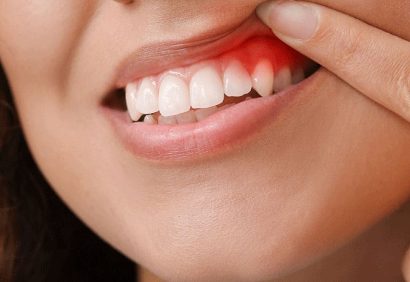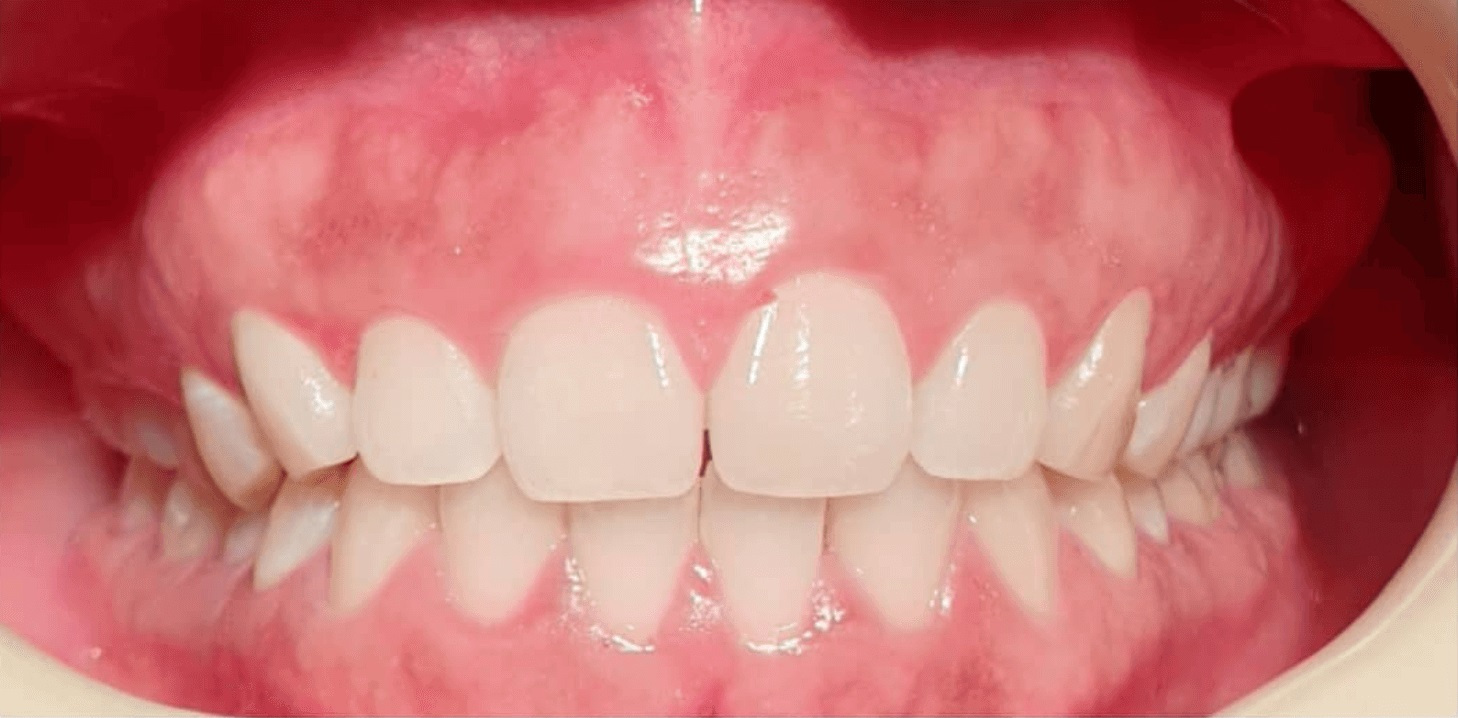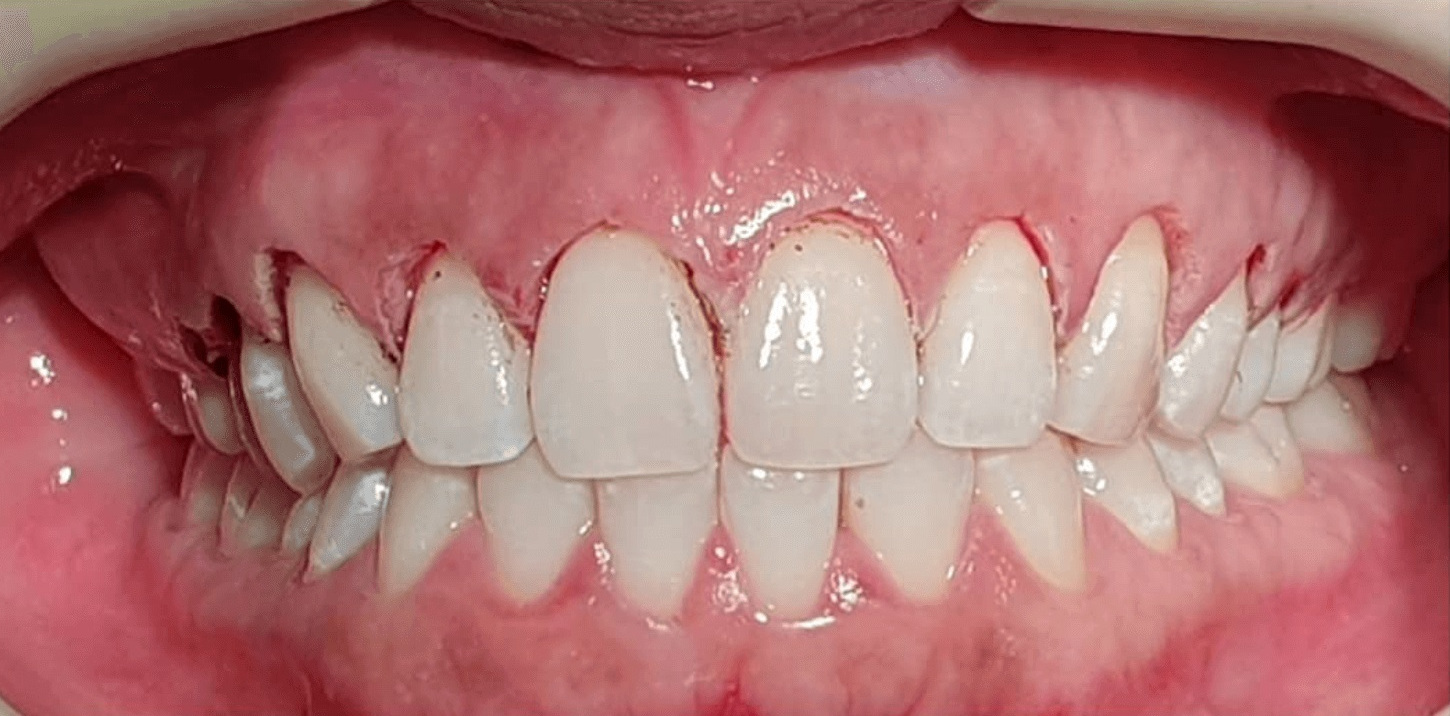Jump To:
Fast Facts
- Treatable Parts: Gum Disease
- Approximate Length of Stay: 3 Days
- Operation Duration: 1-2 Hours
- Approximate Recovery: 1-2 Weeks

Periodontics
“Periodontology”, also known as “Periodontics”, is a specialized branch of dentistry that focuses on the prevention, diagnosis, and treatment of diseases and conditions affecting the periodontium—the tissues that surround and support the teeth.
This includes the gums, alveolar bone, cementum, and the periodontal ligament. Periodontists are dental specialists who have advanced training in managing periodontal (gum) diseases and performing complex procedures, such as dental implants and gum grafting.
Key Aspects of Periodontology
The Periodontium
- Gingiva (Gums): The soft tissue that covers the alveolar bones and surrounds the teeth, providing a protective barrier against bacterial invasion.
- Alveolar Bone: The bone structure that supports the teeth and holds them in place.
- Periodontal Ligament: The fibrous connective tissue that connects the tooth to the alveolar bone, providing support and shock absorption.
- Cementum: The calcified layer covering the tooth root, anchoring the periodontal ligament to the tooth.
Periodontal Diseases
- Gingivitis:
- Definition: The mildest form of periodontal disease, characterized by inflammation of the gums without affecting the bone.
- Symptoms: Red, swollen, and bleeding gums, particularly during brushing or flossing.
- Reversibility: Gingivitis is reversible with proper oral hygiene and professional cleaning.
- Periodontitis:
- Definition: A more severe form of periodontal disease that involves the destruction of the supporting bone and periodontal ligament.
- Symptoms: Gum recession, deep periodontal pockets, tooth mobility, bad breath, and eventual tooth loss if untreated.
- Progression: Periodontitis progresses in stages—mild, moderate, and severe—depending on the extent of tissue and bone loss.
- Gingivitis:
Causes and Risk Factors
- Bacterial Plaque: The primary cause of periodontal disease is the accumulation of bacterial plaque on the teeth and gums.
- Genetics: A family history of periodontal disease can increase the risk.
- Poor Oral Hygiene: Inadequate brushing and flossing allow plaque and tartar to accumulate, leading to gum inflammation.
- Smoking and Tobacco Use: Major risk factors that impair the body’s immune response and healing process.
- Systemic Health Conditions: Diseases such as diabetes, heart disease, and immune disorders can increase the risk and severity of periodontal disease.
- Stress: Can impair the body’s ability to fight infection, including periodontal infections.
- Hormonal Changes: Fluctuations in hormones, such as during pregnancy, puberty, or menopause, can make gums more susceptible to disease.
Diagnosis of Periodontal Diseases
- Clinical Examination: A periodontist examines the gums, checks for signs of inflammation, and measures periodontal pocket depth using a periodontal probe.
- Radiographs (X-rays): Dental X-rays are used to assess the bone levels around the teeth and detect bone loss.
- Periodontal Charting: Detailed recording of pocket depths, gum recession, and attachment loss to monitor disease progression.
Treatment of Periodontal Diseases
- Non-Surgical Treatments:
- Scaling and Root Planing (Deep Cleaning): Removal of plaque and tartar from above and below the gum line, followed by smoothing of the root surfaces to encourage reattachment of the gums.
- Antibiotic Therapy: Local or systemic antibiotics may be used to reduce bacterial infection in the periodontal pockets.
- Maintenance Therapy: Regular periodontal cleanings and check-ups to prevent recurrence of the disease.
- Surgical Treatments:
- Flap Surgery (Pocket Reduction Surgery): Involves lifting the gums to remove tartar deposits, reduce periodontal pockets, and reposition the gums for better attachment.
- Bone Grafts: Use of bone grafts to regenerate lost bone and support tooth structure.
- Guided Tissue Regeneration: A procedure that encourages the regrowth of bone and tissue lost due to periodontitis.
- Soft Tissue Grafts: Grafting of gum tissue to cover exposed roots, reduce sensitivity, and improve aesthetics.
- Crown Lengthening: Reshaping of gum and bone tissue to expose more of the tooth’s structure for restorative procedures.
- Non-Surgical Treatments:
“Periodontology” plays a crucial role in maintaining the health of the gums and supporting structures of the teeth. By focusing on both the prevention and treatment of periodontal disease, periodontists help ensure that patients maintain healthy, functional, and aesthetically pleasing smiles throughout their lives. SHIFA is by your side all the way from consulting to providing specialized treatment services.
Compare Before and After Images


Periodontics
Frequently Asked
Questions
Can a Gummy Smile grow back?
If your Gummy Smile was corrected by a procedure that removes excess gum tissue (like gum contouring or crown lengthening), the gum tissue typically does not grow back. These procedures are designed to offer a long-term solution for a gummy smile.
Why choose SHIFA for Dental Services?
Iran is a popular destination for dental tourism because of its affordable dental services, high-quality care, and well-equipped clinics.
Dental procedures in Iran can be 30–80% cheaper than in other countries.
In Shifa clinic we provide dental services in the shortest possible time using expert dentists at the best cost.
Is treating Gum Disease painful?
Scaling and Root Planing (Deep Cleaning): This non-surgical treatment removes plaque and tartar buildup from above and below the gum line. It’s generally considered painless, with some patients experiencing mild discomfort or sensitivity afterward. Local anesthesia is sometimes used for additional comfort.
Can a Gummy Smile be permanently corrected?
Yes, a Gummy Smile can often be permanently corrected with several available treatment options, depending on the underlying cause. Treatments range from gum contouring or crown lengthening for mild cases to orthodontic treatment or surgical procedures for more severe cases.
SHIFA's Departments
Related Services
Featured Services

Upper Arm Lift
An “Upper Arm Lift”, also known as “Brachioplasty”, is a surgical procedure designed to improve the appearance of the upper

Facial Botox Injections
“Facial Botox injections” are a popular non-surgical cosmetic procedure used to reduce the appearance of facial wrinkles and fine lines.

Oral and Maxillofacial Surgery
“Oral and Maxillofacial Surgery” (OMFS) is a specialized field of surgery focused on the diagnosis, surgical treatment, and management of

Eye Deflection Surgery
Deflection of the eye, often referred to as “Strabismus”, is a condition where the eyes do not properly align with
Our Blog Articles
- mehdi.mhj@gmail.com
5 Great reasons to use an online doctor to choose
Delve into the impact of digital life on mental health & discover practical strategies to...
Read More- mehdi.mhj@gmail.com
Doccure – Making your clinic painless visit?
Explore the benefits & challenges of virtual healthcare appointments, along with tips for making good...
Read More- mehdi.mhj@gmail.com
What are the benefits of online doctor booking
Explore importance of quality sleep & learn tips to improve your sleep, ensuring raise-up refreshed...
Read More- mehdi.mhj@gmail.com
Benefits of Consulting With an Online Doctor
Uncover strategies to achieve a harmonious balance between professional and personal well-being....
Read More





Comments are closed.